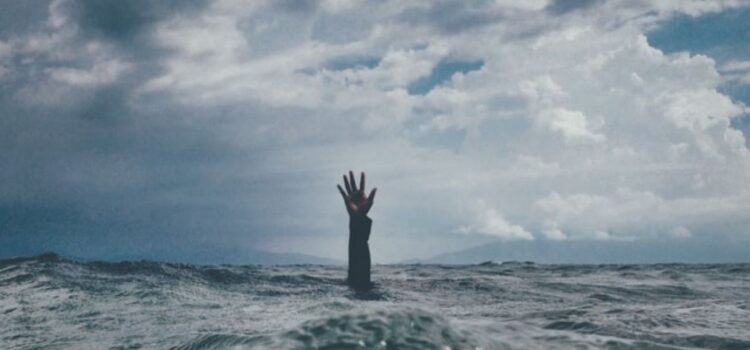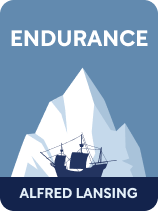

This article is an excerpt from the Shortform book guide to "Endurance" by Alfred Lansing. Shortform has the world's best summaries and analyses of books you should be reading.
Like this article? Sign up for a free trial here .
How did the Endurance crew survive at sea? How did they get stranded at sea in the first place?
Alfred Lansing’s book Endurance tells the story of how Ernest Shackleton kept his crew alive after their expedition to Antarctica went horribly wrong. When their ship sank and their camps became inhospitable, they rowed to land.
Keep reading to learn how the Endurance crew survived at sea.
Rowing Through the Ice and Open Ocean
On April 9, 1916, over five months after abandoning the ship, the crew was stranded at sea. They boarded their lifeboats and began rowing toward land. On the open ocean, they battled the floes crashing into them along the way. They rowed all day and when it got dark, the three boats huddled, and they looked for a floe to camp on for the night. The first night, the floe they slept on cracked, and Lansing says one of the men fell into the water, trapped inside his sleeping bag, but Shackleton managed to pull him up. They decided camping on floes was no longer safe.
(Shortform note: Their boats had oars and sails, and they chose which to use depending on the weather conditions. Since the wind was often not in their favor, they couldn’t rely on their sails and had to row through most of the journey. However, rowing was no guarantee of progress. The current overpowered them often, especially since they were cold, thirsty, and had little to eat, and rowing with all their force just barely made progress in the direction of land. To make matters worse, their oars were covered with thin layers of ice, making them even harder to grip.)
Camping on an Iceberg
After some time, being stranded at sea proved to be too dangerous. Shackleton decided to camp on an iceberg, the only body large enough to hold all of them. They climbed up and pulled the boats up vertically. Lansing recounts how, in the process of pulling up the boats, one of the men fell into the water. Others who were still below rescued him.
The next morning, they realized a gale had packed the floes surrounding the iceberg tightly. Their boats wouldn’t make it through the ice without being crushed and the iceberg was falling apart with each crash of the neighboring floes. Shackleton spent his time stationed on the highest point, looking to the horizon and calculating when it would be safe to board the boats.
Thankfully, after they had spent a day on top of the crumbling iceberg, a freak current developed, moving in the opposite direction from the wind. This cleared the ice on one side of the iceberg, and opening a way to the open sea. They scrambled to the boats and sailed as the current took them. To take advantage of the current, Shackleton decided to aim for King George Island.
On the morning of April 12, they realized the wind had moved them farther from land than they had been when they left their last camp on the floes. Shackleton changed their target from King George Island to Hope Bay.
Fighting the Water, Wind, Ice, and Snow
Being stranded at sea proved to be a difficult journey. The three boats huddled together trying to sail toward land, but they faced the brutality of the ocean and the weather in Antarctica’s Weddell Sea. They couldn’t sail through the night because the smaller boats would get lost, and they had to stop whenever the wind and ice became too treacherous for the boats. Lansing describes how they arranged the boats in a line formation, fastened to each other but kept apart by oars stretched out from the center boat. This way, the stronger boat could help the smaller boats along and they wouldn’t become separated.
They finally made it through the ice pack and into the open ocean. But that was the beginning of some of their worst days. They sailed continuously while the weather allowed them to. However, they made little progress because the wind was often not in their favor. Every time the wind changed, Shackleton had to change the island they were aiming for.
The wind brought water in continuously and it froze as soon as it reached them. They had to break the ice that formed at the bow of the smaller boat every 30 minutes so it wouldn’t go under. Some of their oars froze and broke, making rowing even more difficult. They had to keep every part of their bodies moving so they wouldn’t freeze. The crew suffered from diarrhea, seasickness, and hunger. They were so thirsty that they chewed raw seal meat to wet their throats with blood. It began snowing and the men were freezing and unable to sleep. One of the men lost his toes to frostbite.

———End of Preview———
Like what you just read? Read the rest of the world's best book summary and analysis of Alfred Lansing's "Endurance" at Shortform .
Here's what you'll find in our full Endurance summary :
- The story of the Endurance, an expedition ship that sunk on its way to Antarctica
- The crew's journey of survival and their search for rescue
- How Ernest Shackleton lead the crew to safety






